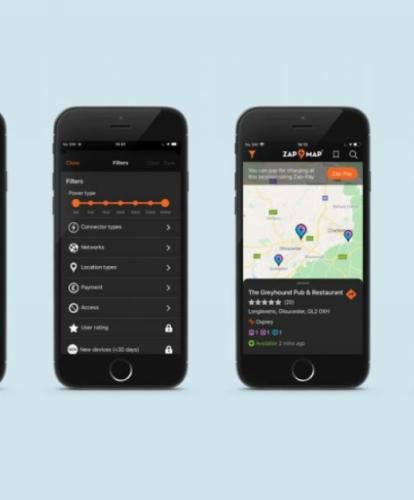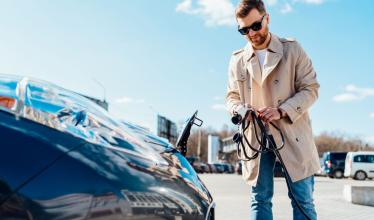Welcome to ‘Five more things you might not know about Zapmap’. This is the third part of a series of articles we’ve created in order to highlight some of the lesser-known (but just as useful) features of the app.
We hope you’re finding these articles helpful – you’re certainly reading them! In any case, we’re putting them together because our user community is a core part of what makes Zapmap tick. Indeed, your contributions, check-ins and comments are invaluable, plus we love getting feedback on areas for enhancement.
We have occasionally been surprised, however, by requests for functionality that’s already available on the app. In light of this, you’ll find below some lesser-known features on the app, with some snappy videos to help you out too.
You can see Part Two here: Five Zapmap features you may not know.
Five more things you might not know about Zapmap
1. The Navigation button makes things easy
If you’re driving in an unfamiliar area, or perhaps a new charge point has been installed that you don’t know how to get to, you can use the Navigation button in Zapmap to get directions to a charge point quickly and easily. There’s no need to copy the address or even to open another app – you can use Zapmap’s Navigation button to punch out to a mapping service of your choice.
To navigate to a charger, simply open the charge point in Zapmap and click into the orange arrow symbol in the corner of the photo. This will bring up whichever mapping apps you have installed on your device, such as Google or Apple Maps. Choose your mapping app and it will show directions from your location to the charge point you’ve selected.
See how to navigate to a charger using a mapping service of your choice in the video below.
2. Did you know you can save your own unique filter?
If you find yourself regularly using the same filters on Zapmap, you might want to save your choices as a unique filter. You can name your filter for easy reference and you won’t need to make the selection each time.
To save your own filter in the app, open Zapmap and click on the Filter icon. Select whichever filters you prefer – you could choose car parks (Location type) with 24 hours access (Access), for instance – and make sure to click ‘Save’ at the top of your screen. After naming your filter, Zapmap will in this example only display chargers at car parks that have 24-hour access.
See a different example of how to save your own unique filter in the short video below.
3. You can use List view in the route planner
You’re probably already familiar with Zapmap’s route planner. However, you may not be aware that you can open the List view when planning a route. This view shows you all of your plan details, including the distance, estimated energy usage, driving time, average speed and number of charge stops. From here, you can also click into any of the charge points you’ve added for specific information.
To find the List view in the route planner, open up Routes, select a previous route you’ve created and then click on the list icon at top of your screen.
Watch the short video below to see how to use List view in the route planner.
4. Have you checked-in to a charge point yet?
Checking in to a charge point is useful to other Zapmap users because it allows them to see whether or not a charging device, or connector, is functioning properly.
You may have noticed that, upon opening a charge point on Zapmap, an orange ‘Check-in’ button displays at the bottom of your screen. This is where you can report a successful charge or indeed an issue with a device. Here you can also add a comment or a photo, report the bay ICE’d, or edit the information about the charge point for review by Zapmap’s data team.
See how to check-in to a charge point in the video below.
5. Keep an eye out for Zap-Pay
Zap-Pay, the simple way to pay for EV charging across networks from within the Zapmap app, is gaining significant momentum.
As a single-app payment system that uses a credit or debit card to pay for charging, Zap-Pay avoids the hassle of using multiple apps across different networks. That means you can search, plan and pay for charging all from within the Zapmap app. You’ll also be able to view your charging history, receive live status updates while away from your vehicle, and download receipts.
National charging networks GeniePoint and Mer are now live on Zap-Pay, along with ultra-rapid network MFG EV Power. The three networks join Osprey, ESB Energy and char.gy, and make hundreds more chargers Zap-Pay enabled for EV drivers across the country.
Fastned and Revive – as well as on-street providers Connected Kerb and Charge My Street – have also signed up to Zap-Pay and are scheduled to go live in the coming months.
Learn more about Zap-Pay in the short video below.
Zapmap now has more than 430,000 registered users, as well as over 95% of the UK’s public points on its network. Find out more about Zapmap, or download the app if you haven’t already, using the button below.



